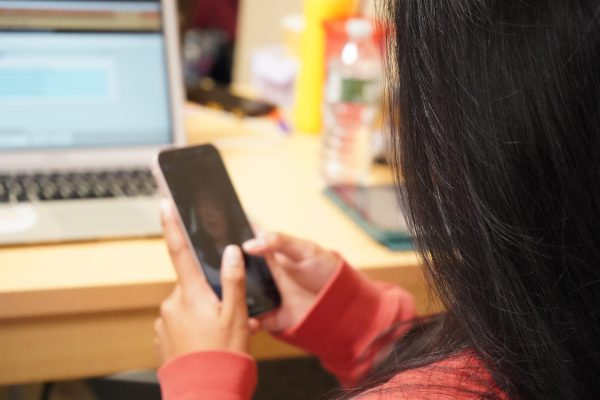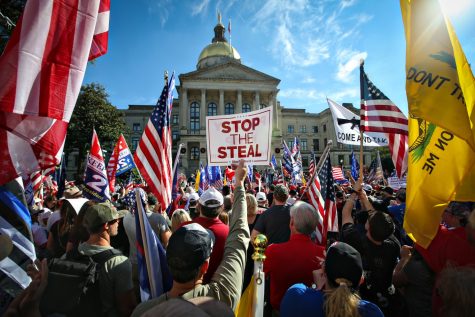The Failed Relationship Between Americans and the Media
“…since the dawn of the new century, trust in the media has been declining.”
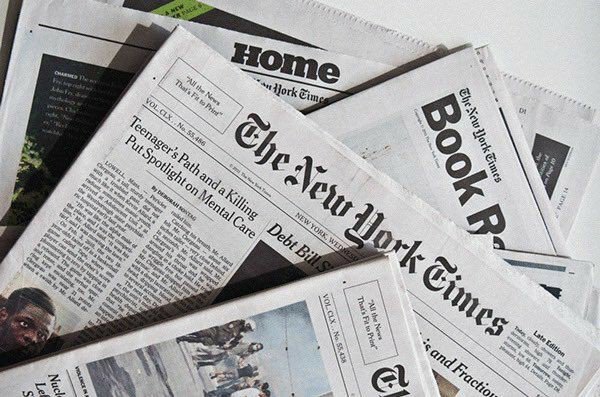
As the 2020s roll in, many Americans are experiencing a crisis of faith when it comes to the relationship they have with the media, a relationship in which we once put our absolute trust and reliance on the news they consume.
That integral trust has faded as the year’s progress, especially when we factor in the effects social media, social unrest, political scandals, and economic troubles have had on our society.
Fake news and other dangerously misleading information have plagued the news and media to the point where many see them as a hindrance to society and not as something made to improve society and exchange vital knowledge across the globe. The Americans’ trust in news and media has dropped to an all-time low of 34%, and that number continues to freefall, according to a recent poll conducted by Gallup.
In October of 2022, a poll, titled “Americans’ Trust In Media Remains Near Record Low”, examined how the public’s relationship with news outlets has changed in the last year, particularly when considering how social media and rising political tensions have played a role in mistrust in media.
Only 7% of American citizens have a “great deal of trust and confidence” in the media they consume. On the other hand, 28% “say they do not have very much confidence” and 38% have “none at all in newspapers.”
Anthony Aggimenti, a Mercy College media professor, is not surprised by this polling data showing the overwhelming amount of public suspicions when it comes to news and media.
And when discussing the origins of this mistrust, Aggimenti explained that no one moment in recent history can be pointed to as the sole cause.
“It is difficult,” Aggimenti said, “to pinpoint one specific incident or moment as the cause, but the levels of trust were considerably higher in the late 1990s.”
He went on to discuss the fact that “since the dawn of the new century, trust in the media has been declining. This also happens to coincide with a tumultuous period in American history and politics – the 9/11 attacks and America’s involvement in wars overseas.”
 But Aggimenti also pointed out the fact that the news industry is not the only American institution that is facing public disdain.
But Aggimenti also pointed out the fact that the news industry is not the only American institution that is facing public disdain.
“According to their data,” Aggimenti said while explaining the Gallup poll, “only small businesses and the military experience high levels of confidence. Institutions as different as tech companies, banks, public schools, and the medical system seemingly are not thought of as having a great deal of confidence from Americans.”
The generalization of what most people believe about the media differs in people’s age, how often they watch the news, and how much they believe by seeing and hearing from the media being true or not.
There can be people that have a high level of trust when it comes to the point of believing the accuracy as well as relying heavily on the information provided. While others don’t rely on the media at all but tend to be skeptical if not critical of the media and the information it provides.
Numerous factors can affect an individual’s beliefs through the media, whether it’s with their level of media literacy or through their personal experiences. Many do not understand how the media could be used from a biased standpoint or manipulated, as they easily believe in Twitter posts and tweets from a variety of people.
“Notably, this is the first time that the percentage of Americans with no trust at all in the media is higher than the percentage with a great deal or a fair amount combined,” Gallup reports.
Additionally, politics also hold a large effect on the media in numerous ways, as many outlets will use it as a selling point towards what type of audience they would like to reach.
Many believe the term “fake news” was made popular by politician and former President Donald Trump during his first presidential campaign after news outlets accused him of things he argued weren’t true.
But over seven years later, the phrase has evolved to encapsulate numerous meanings.
According to Ambrose Ronson, who closely follows the current political landscape, “There’s no concrete meaning to it. But Trump made it popular so conservatives were made much more skeptical about the media than in the past. In turn, liberals began also calling many conservative talking points who had little backing from good sources fake news, hence where it gets multiple meanings from.”
Ronson continued with what his definition of it was, stating it’s “news stories aimed to mislead the public with false, or unverified information in an attempt to create a narrative surrounding someone or something.”
He then went into how it is affected in the media, saying politics “has a two-party system, and some news and media outlets prefer one side, and view things harshly on the other.” Some key examples of the type of networks that exemplify these tactics are Fox News for conservatism and CNN for liberalism.
He argued former President Trump is the perfect example of someone who was covered with these tactics, as “fake” news was often spread to either build him up or put him down in the public eye.
The political impact on audiences around the world for different types of media is a great one, with certain companies usually leaning towards one side or the other, as a way of really branching towards the supporters of that certain side. This effect gets sprinkled throughout different types and is connected in so many ways, but some of these ways have unfortunately become a little bit harmful.
These major national events, including the major economic crisis in 2008, deepening ideological/political/economic divisions, social unrest, and a global pandemic all have “led many Americans to become distrustful not just of news media but of many different American institutions.”
The early days of the pandemic seemingly only worsened the media’s relationship with the public.
And now, college students are left facing internal dilemmas regarding what they believe in because of the “false hope” that some media outlets promote.
More and more Americans aren’t regular viewers of the daily news like generations prior. Apps used for social media, Twitter, Instagram, and Facebook, have evolved into attention grabbers. Trending is how many shocking revelations are discovered. As technology has progressed, people have made sure to go along with it.
When Pew Research Center first began tracking the usage of citizens on social media platforms in 2005, it was only less than ten percent. Five years later, it increased rapidly to about 40% of adults using social media. That number in 2020 was just over 70 percent of the population.
“Young adults were among the earliest social media adopters and continue to use these sites at high levels, ” the research center states.
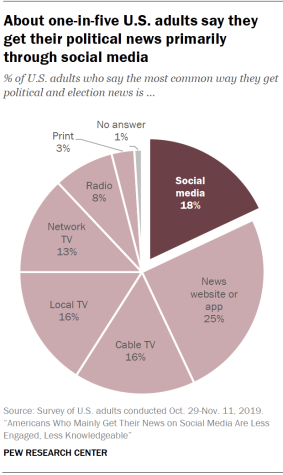 This lines up with the general mindset of the Mercy College campus.
This lines up with the general mindset of the Mercy College campus.
Students like Mariama Diallo have expressed their “appreciation” for the new wave of fast media and how it leads them to rely more on it. Diallo said, “For us, things feel wildly broadcasted, and we can express their opinions.”
And when talking about social issues like police brutality, she claims that social media successes where traditional news lacks.
Diallo doesn’t sense the highlight of social issues on the news but sees the light shed on media outlets instead. There have been many social movements that developed because of new media such as #METOO and Black Lives Matter.
When asked if the media could find a way in the future to improve their relationship with Americans, Professor Aggimenti pointed to a Pew Research Center poll released earlier this year where journalists were asked: “whether both sides of an issue should be given equal coverage.”
44% of journalists “thought equal coverage was important whereas 55% of journalists did not believe in equal-sided news coverage. Compare this with a survey of non-journalist Americans – 76% believed in every side getting equal coverage whereas only 22% did not believe in equal coverage of issues.”
One avid political follower, Holden Cole, argued that “politics for sure heavily influences news in major ways especially nowadays, because whenever there is a story that can be used as a way to push a narrative, that people want, it will be.”
He also confirmed that he believes fake news is a huge part of it, stating “Yes I believe a lot of people think fake news is real. Now more so than ever, people don’t want to believe statistics that go against a belief or their way of life.”
People would find it hard to believe a report coming from an outlet someone from their beliefs doesn’t trust, even if it was factual because of political biases.
Cole finished with “I think in general, with news organizations pushing more democrat or conservative, the outlets themselves get a lot more choosy with what or how they report things.” And there is a fine line some of these companies have to walk with political information, or it can affect key sources and connections each media outlet has.
Cole summed up the way how many people who live in this country feel, like living in uncertainty because the media is not to be trusted to be unbiased, and can be not true.
They understand why it is used like this, but there’s a greater population who doesn’t and has a hard time trusting these outlets because fake news is a possibility.
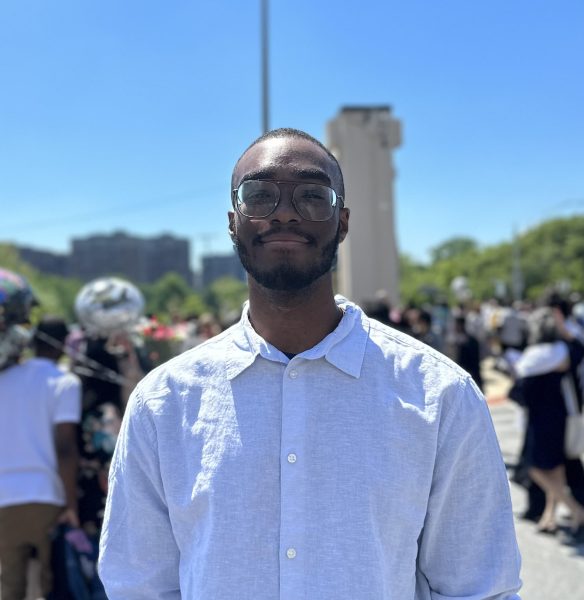
Maleek Munroe is a senior at Mercy College, majoring in communications. He graduated Nyack High School, where he found his love and passion for both...

Mia Tindel is a senior at Mercy College studying Journalism. In high school, she discovered her love for journalism, music and reading. She is curious...

Kris Torres is a Junior Journalism Major at Mercy College. A former football player, he is passionate in writing about Campus Current events, Sports,...
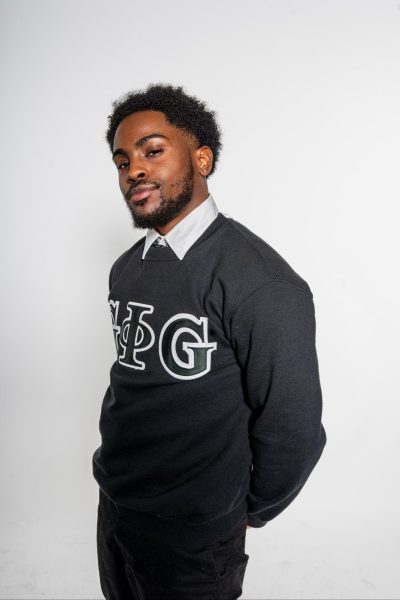
Nate Singleton is a Senior pursuing a degree in Media Studies: Journalism at Mercy University. He serves as the President of the Big Apple City Chapter...




